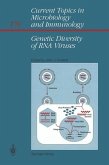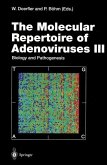The purpose of this volume is to highlight some current areas of poxvirus research which are likely to be particularly fruitful in the upcoming few years. The first chapter, by Drs. Condit and Niles, discusses poxvirus genetics. Work in this area has provided mutants, produced practical procedures to simplify the manipulation of viral genes, and generated information about the molecular architecture and organization of genes characteristic of pox viruses. One of the most intensively studied regions of the viral genome is the HindIII D region of vaccinia, in which a combination of classical and molecular genetic analysis of the region has been particularly revealing. Within this region are open reading frames, some of which are expressed early and others late, organized in a fashion which is now known to be typical of these viruses. Other studies, related to temperature sensitive, drug resistant, and drug dependent mutants, are also discussed. Each of the other reviews included inthis volume summarizes areas of research which have depended heavily on the genetics of the system. The intracellular site of a poxvirus infection is mostly, if not exclusively, limited to the cytoplasm which dictates several interesting biological ramifications. For example, poxvirus transcription must occur in the cytoplasm, rather than in the nucleus. The virus copes with this situation by incorporating into the virion the enzymatic machinery necessary to initiate transcription from input virus.
Hinweis: Dieser Artikel kann nur an eine deutsche Lieferadresse ausgeliefert werden.
Hinweis: Dieser Artikel kann nur an eine deutsche Lieferadresse ausgeliefert werden.








